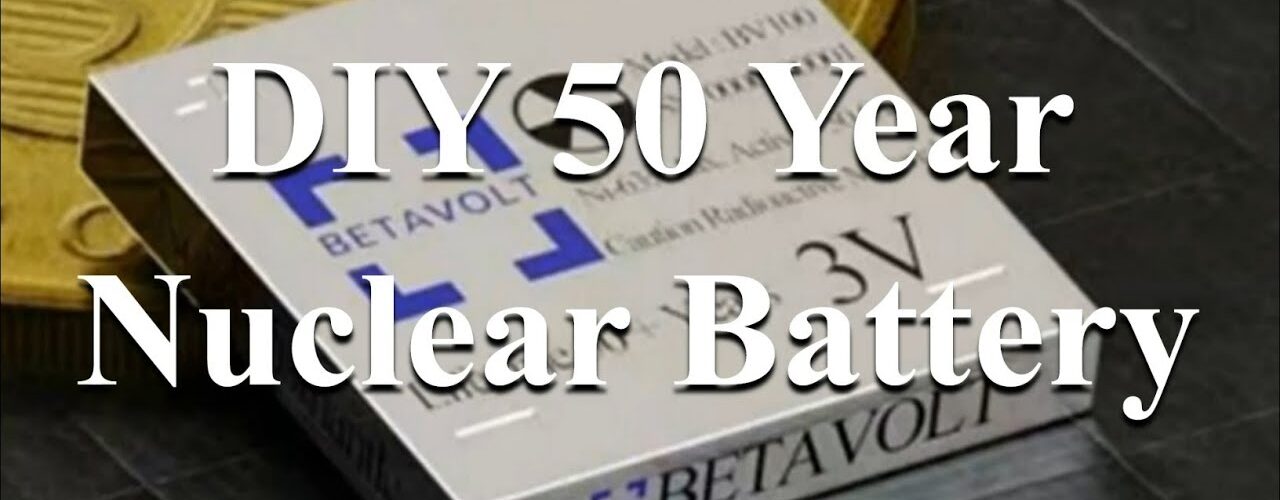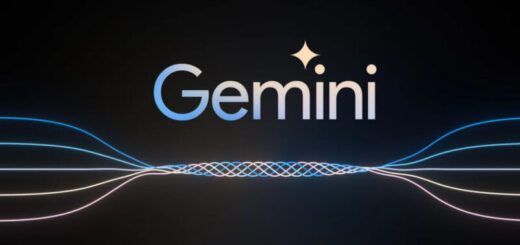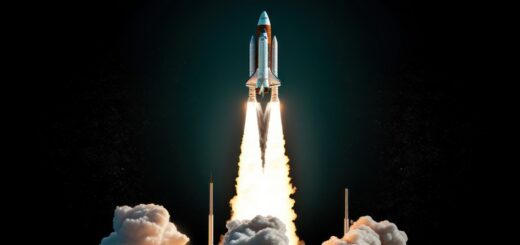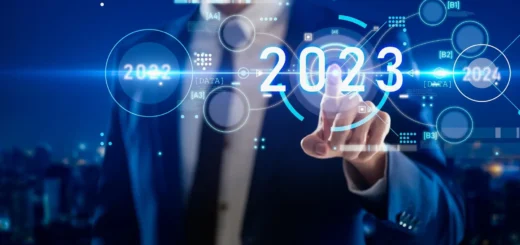Will we soon all power our phones with nuclear power?

A Chinese company has announced they’re planning to mass-produce tiny nuclear batteries that can last up to 50 years, possibly beating both a British and an American company who have tried to put those on the market for several years.
What does that mean?
We tend to think of radioactive material primarily as dangerous, and that’s for good reasons. But that it’s radiating also means that it’s emitting energy. Radioactive materials therefore make for great batteries. If you use a material with a long half-life, nuclear batteries could last thousands of years without having to recharge.
This idea is new?
The idea isn’t new, especially for medical devices where battery replacements are a health hazard. Already in the 1970s, pacemakers were equipped with plutonium-powered batteries. Some of them still run today. Newer devices use lithium batteries that have to be replaced once a decade or so. But nuclear power is currently enjoying a strong comeback as an environmentally friendly source of energy.
A few companies are producing nuclear batteries powered by tritium decay but at the moment they’re used primarily for scientific or medical purposes rather than for the consumer market. It’s because they produce very little power, in the range of nanoWatts or microwatts. Just for comparison, your phone needs a few Watts at least. So these batteries are not replacements for the batteries that you are used to, they’re good to deliver low power but for a very long time. There’s a market for this, but it’s a small one. In the past years we have repeatedly seen headlines about startups who want to bring more and bigger nuclear batteries on the market.
Notably there’s the British company Arkenlight formed by researchers at the University of Bristol. They said they wanted to bring small nuclear batteries on the market by 2024, using Carbon-14, in the range of up to 200 microwatts. That’s on the high end of nuclear batteries but still very little compared to what most devices need. Their website seems to have gone missing last year. Then there’s the American company Nano Diamond Batteries that made a lot of headlines a few years ago by claiming they can produce batteries that last more than 20 thousand years from Nuclear Waste. A few months ago charges of fraud were raised against them. The claim is that the company deceived investors by pretending to have tested technology that didn’t exist. So, hmm, the half life of that company was somewhat shorter than expected. But just exactly what technology are these companies working on? Batteries powered by nuclear decay come in two different types.
How Generate Energy?

The one is to use a radioactive substance to generate heat, and then use the difference in temperature between two places to generate a current. This is known as a radioisotope thermoelectric generator. The technology for this was first developed in the 1950s and sixties by the Air Forces in the United States and the former Soviet Union. Back then, they were looking for a reliable and long-lasting power source for space missions, particularly those exploring environments where solar power isn’t available. At least that’s what they said was the reason they were developing these things. Pretty sure they came in handy for other purposes, too.
Would you like a nuclear battery with your salmon?
Whatever the motivation to develop nuclear batteries, they’ve since been used in many space missions. Also the European Space Agency has recently given up its opposition to using nuclear batteries. This is probably in no small part because of what happened with the Philae probe that landed on a Comet in 2014 as part of the Rosetta mission. It had a rough touch-down, hopped a few times and landed in the shadow. After three days its batteries, that were supposed to recharge on solar power died. And that was the premature end of a very expensive mission. ESA is now planning to use a nuclear-powered spacecraft for its Argonaut Moon lander, scheduled to launch in the early 2030s.
But while the technology for these radioisotope thermoelectric generators is well understood, they tend to be quite big. Also the detour through a temperature gradient is rather inefficient if you want to generate electricity. If electricity is what you want, a better solution is to use semiconductors in which the generation of electricity is directly driven by nuclear decay. The new battery put forward by the Chinese company is of that type, and so are the ones by the British and American companies. These types of batteries are called alphavoltaic, betavoiltaic, or gammavoltaic batteries, depending on whether they use radioactive alpha, beta, or gamma decay. Just as a quick reminder, alpha decay means that a large nucleus spits out chunks with two neutrons and protons, which are Helium nuclei. Beta decay means the nucleus spits out electrons. And gamma decay means that the nucleus spits out photons.
The Chinese company uses beta-decay and called itself “betavolt” after that. They use Nickel-63 which has a half-life of roughly 100 years and layer it between diamond semiconductors with an p-n junction. This sounds kind a technical and I guess it is, but maybe it helps to know that this semiconductor stuff is the same type of material that’s normally used in solar cells. In the solar cells its infalling light that creates a current. For the nuclear battery it’s not infalling light, but the electrons emitted in the beta decay that create the current. The company betavolt won third prize for their battery in a recent Innovation Competition by the China National Nuclear Corporation. The technology itself isn’t new, but the push to the consumer market is. The company’s first product is called the BV100 battery. It has a power of 100 microwatts and a voltage of 3 volts. It has about the same size as a typical cell battery. The power is somewhat lower than what the British company is aiming at but the voltage they quote is somewhat higher. So the Chinese battery looks plausible enough, but like the other nuclear batteries, it’s probably going to remain a niche technology for low power devices that need to last a long time.








